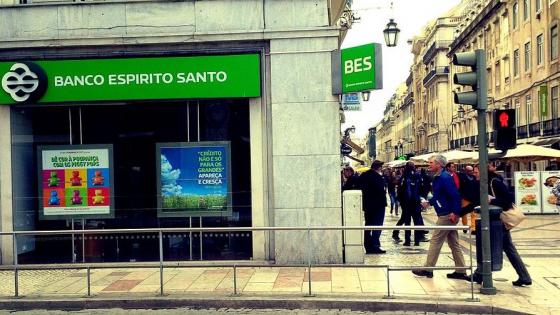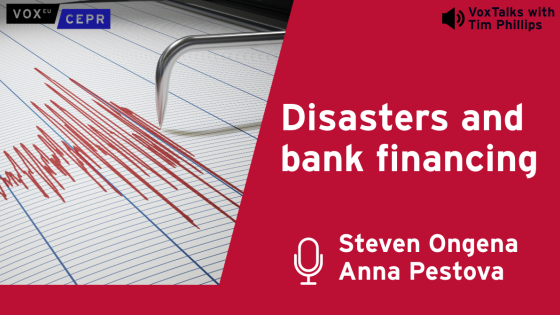Most bank failures during the Global Crisis were solved by bailing out equity and debtholders using public funding. In Europe, for instance, taxpayers have covered more than two-thirds of the cost of resolving and recapitalising financial institutions (Philippon and Salord 2017).[1] This was justified not only by the absence of explicit bank resolution regimes and the pernicious effects that sending a bank through corporate bankruptcy would have in terms of financial stability (and as clearly shown with Lehman Brothers’ demise), but also by the need to avoid a credit crunch and protect the real economy.
To counter this pervasive issue, governments across Europe and other developed economies introduced formal resolution and bail-in regimes that involve the participation of bank creditors in bearing the costs of restoring a distressed bank and include heavy restrictions on taxpayer support. In fact, while this new tool hypothetically lets banks fail without resorting to public funding, the European regime also allows for extraordinary public support under certain conditions (e.g. Schoenmaker 2017). This bail-in approach has been applied on some occasions even before being formalised in European legislation (in the Bank Recovery and Resolution Directive, or BRRD), including in the case of Banco Espírito Santo (BES), which was resolved in August 2014 following what was described as “one of Europe’s biggest financial failures” (Financial Times 2014). The bank was by then considered a significant credit institution by the ECB/Single Supervisory Mechanism (SSM) and was the 3rd largest bank in Portugal, with a market share of 19% of credit granted to non-financial corporations. In recent work, we investigate the implications for credit supply as well as firm-level investment and employment decisions of this rare case of a bank bail-in (Beck et al. 2017).
The effects of bank resolution
An effective bank resolution framework should solve the trade-off between imposing market discipline and minimising the effects of bank failure on the rest of the financial system and the real economy (Beck 2011). Imposing market discipline implies avoiding the negative impact of bail-outs and public guarantees on bank risk-taking (Dam and Koetter 2012). This may contrast with the objective of avoiding the negative repercussions of bank failures that the literature has documented (Ashcraft 2005). While bailouts can improve credit conditions and help the real economy in the short-term (Giannetti and Simonov 2013, Augusto and Félix, 2014, Berger and Roman 2016), they might also set the stage for aggressive risk-taking and future bank fragility.
The resolution of Banco Espírito Santo tried to minimise this trade-off by bailing-in equity and junior debt holders, whose claims were transferred into a ‘bad bank’ together with non-performing assets, while the remaining claims on the bank, together with most of the loan book was transferred into a bridge-bank (‘good bank’). The entire capital of the newly created bank was fully provided by Portugal’s Bank Resolution Fund established in 2012 and financed by contributions of all the country’s lenders. Since the fund did not yet have sufficient resources to fully finance the operation, it took a loan from a group of eight member banks and another from the Portuguese state. In any case, market discipline was imposed on equity and junior debtholders, while access to deposits, savings and loans was continued for most clients. Beyond avoiding short-term panic and contagion effects, what were the implications for credit supply and real firm-level investment and employment decisions?
Our data and identification strategy
We use a unique dataset combining firm-bank matched data on credit exposures and interest rates from the Portuguese credit register with balance-sheet information available for virtually all non-financial firms and their lenders.
We use these different data sources to run both within- and between-firm estimations. Specifically, we exploit a sample of firms that borrow from at least two banks to gauge the effect of bank exposure to the bail-in on credit supply, being thus able to control for demand-side effects (Khwaja and Mian 2008). We capture each bank’s exposure to the resolution by the percentage of assets exposed to the bail-in i.e., asset share that was effectively bailed-in for the resolved bank, and the bank-specific contribution to the Bank Resolution Fund as a percentage of assets for all other banks. Second, we compare firms more and less exposed to the bail-in to gauge cross-sectional effects, controlling for loan demand by including in the regressions the vector of estimated firm-level fixed effects from the within-firm specification (Cingano et al. 2016).
Our findings
- The supply of credit from banks more exposed to the bail-in declined significantly after the shock when compared to less-exposed banks: in economic terms, this amounted to a 5.78% decrease for a one standard deviation increase in bank exposure to the shock. This result is based on a within-firm estimation where we compare for each firm funding from at least two different banks with different exposures to the bank resolution.
- Firms more exposed to the bail-in did not suffer a credit supply reduction after the intervention when compared to less-exposed firms exposed. This finding holds for both large firms and SMEs. Rather, firms exposed to the shock expanded borrowing from other, less-exposed banks, both on the intensive margin (existing banking relationships) and on the extensive margin (establishing new relationships). However, this credit substitution came at the cost of somewhat higher interest rates, tighter collateral requirements and shorter maturities.
- There were real-sector consequences of the resolution event. Despite not suffering a credit supply shock, SMEs exposed to the bail-in experienced a relative reduction in investment and employment. This effect is economically significant: a one standard deviation increase in firm exposure to the shock leads to a 2.3% and 0.6% relative drop in investment and employment for the average firm, respectively.
- SMEs exposed to the bail-in had higher cash holdings after the shock, pointing to precautionary cash hoarding as explanation for the discrepancy in credit supply and real sector effects. Large firms seemed to have achieved a similar effect by increasing outstanding trade credit from their suppliers, thus not having to cut investment and employment.
Conclusions
The resolution of the Portuguese bank analysed here represents a paradigm shift in dealing with distressed financial institutions: bailing in shareholders and junior bondholders, while protecting borrowers and depositors. Fears that enforcing market discipline would result in panic and contagion effects did not materialise. There were negative implications for credit supply by banks more exposed to the bail-in to existing borrowers, but, on average, these borrowers were able to compensate with increased borrowing from other (less exposed) banks. Nevertheless, the bail-in had negative real economy consequences with affected firms reducing investment and employment, while increasing precautionary cash holdings.
While immediate panic and contagion effects were thus avoided, resolution of a failing bank, however well done, may not completely eliminate negative effects on the real economy. This being the first bail-in event in Portugal and one of the few yet around the world, it remains to be seen whether firms exhibit different behaviour in future occasions. Then again, failures of large banks are not necessarily frequent events, so the reaction to this specific bail-in might very well be representative.
References
Ashcraft, A B (2005), “Are banks really special? New evidence from the FDIC-induced failure of healthy banks”, The American Economic Review 95(5): 1712–1730.
Augusto, F and S Félix (2014), “The impact of bank recapitalization on firms’ access to credit: evidence from Portugal”, Financial Stability Papers 2, Banco de Portugal.
Beck, T, S Da-Rocha-Lopes and A Silva (2017), “Sharing the Pain? Credit Supply and Real Effects of Bank Bail-ins”, CEPR Discussion Paper No. 12058.
Beck, T (2011), “Bank Failure Resolution: A Conceptual Framework”, in P Delimatsis and N Herger (eds), Financial Regulation at the Crossroads: Implications for Supervision, Institutional Design and Trade.
Berger, A N and R A Roman (2016), “Did saving Wall Street really save main street? The real effects of TARP on local economic conditions”, Journal of Financial and Quantitative Analysis, forthcoming.
Cingano, F, F Manaresi and E Sette (2016), “Does credit crunch investment down? New evidence on the real effects of the bank-lending channel”, Review of Financial Studies 29 (10), 2737–2773.
Dam, L and M Koetter (2012), “Bank bailouts and moral hazard: Evidence from Germany”, Review of Financial Studies 25(8): 2343–2380.
Enria, A (2016), “From bank bail-outs to bail-in: progress and open issues”, Speech at Regent’s University London, 13 April.
Financial Times (2014), “Banco Espirito Santo: Family fortunes”, 11 September 11.
Giannetti, M and A Simonov (2013), “On the real effects of bank bailouts: Micro evidence from Japan”, American Economic Journal: Macroeconomics 5(1): 135–167.
Khwaja, A I and A Mian (2008), “Tracing the impact of bank liquidity shocks: Evidence from an emerging market”, The American Economic Review 98(4): 1413–1442.
Philippon, T and A Salord (2017), Bail-ins and bank resolution in Europe: A progress report, Geneva Reports on the World Economy Special Report 4, ICMB and CEPR.
Schoenmaker, D (2017.), “Resolution of international banks: Can smaller countries cope?”, ESRB Working Paper No. 34.
Endnotes
[1] Enria (2016) also notes that the European Commission took more than 450 state aid decisions to support the financial sector during the crisis, including €4 trillion in guarantees for bank liabilities, €600 billion in asset relief measures and more than €800 billion in recapitalisations.







